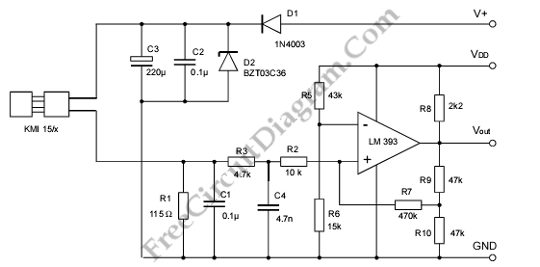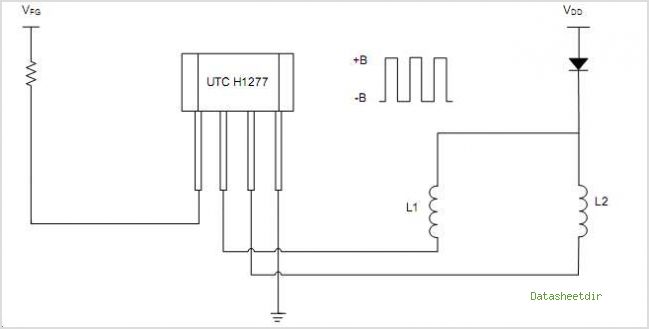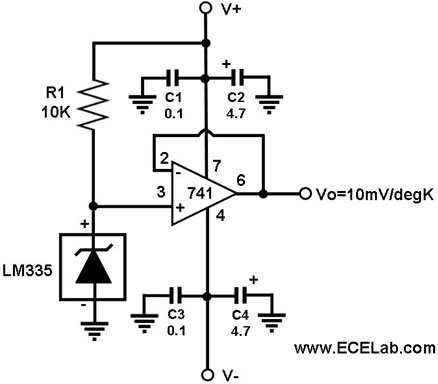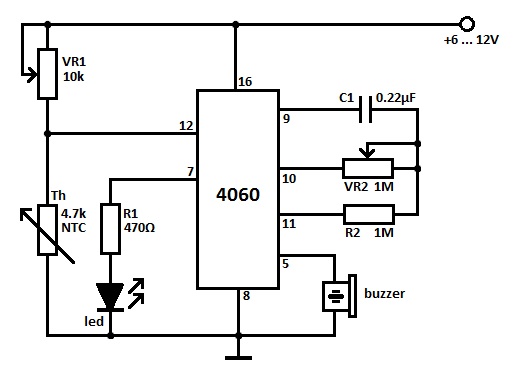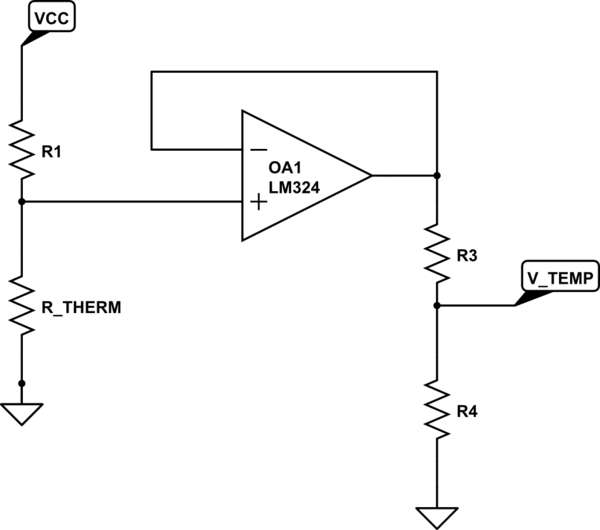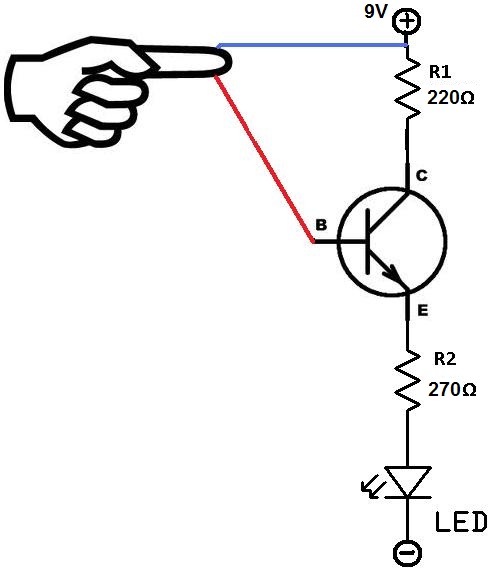
LM134-LM10 Thermometer/Temperature Sensor
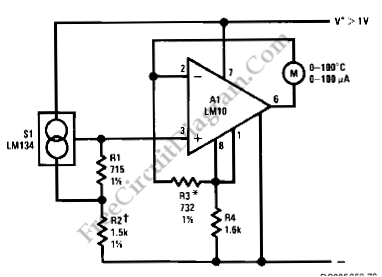
Using LM134 and LM10 integrated circuits, a thermometer can be constructed with a sensing range of -55 to 150 °C. The ideal meter for this circuit is a 0-200 µA.
The proposed thermometer circuit utilizes the LM134, a current source IC, and the LM10, a precision voltage amplifier, to achieve accurate temperature readings over a wide range. The LM134 is configured to provide a constant current that is proportional to the temperature being measured. The temperature sensor, typically a thermistor or a semiconductor temperature sensor, converts the temperature into a resistance change, which is then translated into a current signal by the LM134.
The LM10 amplifies the voltage output from the temperature sensor, ensuring that the signal is suitable for measurement. The output from the LM10 can be calibrated to correspond to the desired temperature range, allowing the user to read temperature values directly from a 0-200 µA analog meter. This meter provides a clear visual representation of the temperature, facilitating easy interpretation of the readings.
In designing the circuit, attention must be paid to the power supply requirements of the LM134 and LM10, ensuring that they operate within their specified voltage range for optimal performance. Additionally, appropriate filtering and stabilization techniques should be employed to minimize noise and improve accuracy. Calibration of the system is essential to ensure that the output current accurately reflects the temperature being measured, which may involve adjusting resistors in the feedback loop of the LM10.
Overall, this circuit design showcases a practical application of integrated circuits in temperature measurement, combining precision and reliability for a wide range of temperature sensing applications.Using LM134 and LM10 integrated circuits, we can build a thermometer which has -55 to 150?C sensing range.? The ideal meter for this circuit is a 0-200uA. 🔗 External reference
The proposed thermometer circuit utilizes the LM134, a current source IC, and the LM10, a precision voltage amplifier, to achieve accurate temperature readings over a wide range. The LM134 is configured to provide a constant current that is proportional to the temperature being measured. The temperature sensor, typically a thermistor or a semiconductor temperature sensor, converts the temperature into a resistance change, which is then translated into a current signal by the LM134.
The LM10 amplifies the voltage output from the temperature sensor, ensuring that the signal is suitable for measurement. The output from the LM10 can be calibrated to correspond to the desired temperature range, allowing the user to read temperature values directly from a 0-200 µA analog meter. This meter provides a clear visual representation of the temperature, facilitating easy interpretation of the readings.
In designing the circuit, attention must be paid to the power supply requirements of the LM134 and LM10, ensuring that they operate within their specified voltage range for optimal performance. Additionally, appropriate filtering and stabilization techniques should be employed to minimize noise and improve accuracy. Calibration of the system is essential to ensure that the output current accurately reflects the temperature being measured, which may involve adjusting resistors in the feedback loop of the LM10.
Overall, this circuit design showcases a practical application of integrated circuits in temperature measurement, combining precision and reliability for a wide range of temperature sensing applications.Using LM134 and LM10 integrated circuits, we can build a thermometer which has -55 to 150?C sensing range.? The ideal meter for this circuit is a 0-200uA. 🔗 External reference
